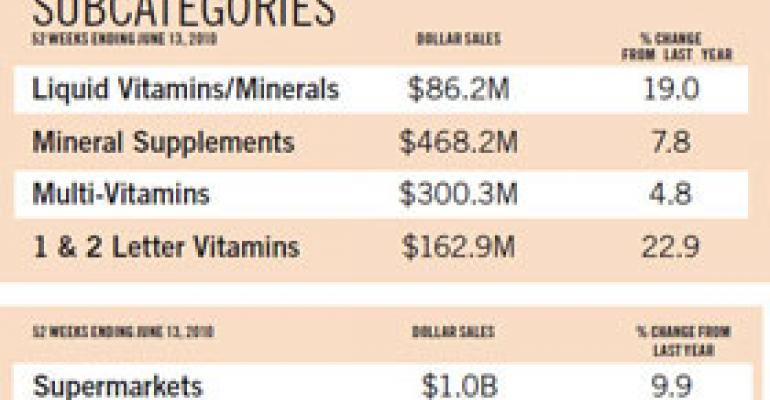
It was another healthy year for the vitamin category. Even though the drug channel outpaces supermarkets in dollar sales, food stores made impressive gains, breaking the $1 billion threshold; sales increased almost 10% over the same period last year.
After years of little or no activity, vitamins and minerals and other dietary supplements found their way into more pantries as consumers adopted preventative health habits in light of the recession.
Yet, other factors at work are independent of economic motives. Baby Boomers are using supplements to ward off the conditions that come with retirement age; more oversight by federal regulators is restoring confidence in the quality and safety of formulas; and manufacturers are now able to offer products that target specific health conditions or problem areas, such as joints, circulation and memory, among others. The success of these products is evident in the double-digit sales increases, as well as on the supermarket shelf, where more retailers are resetting their vitamin sections to focus on condition-specific formulas.
Some vitamins just do well on their own. For example, vitamin D has increasingly been touted as protection against cancer and other diseases, and a federal panel is reviewing a proposal to increase the Recommended Daily Allowance in light of the evidence.
With sales up 19%, liquid supplements that promote health benefits have become popular, appealing to younger consumers who helped propel the energy drink segment over the last decade.

